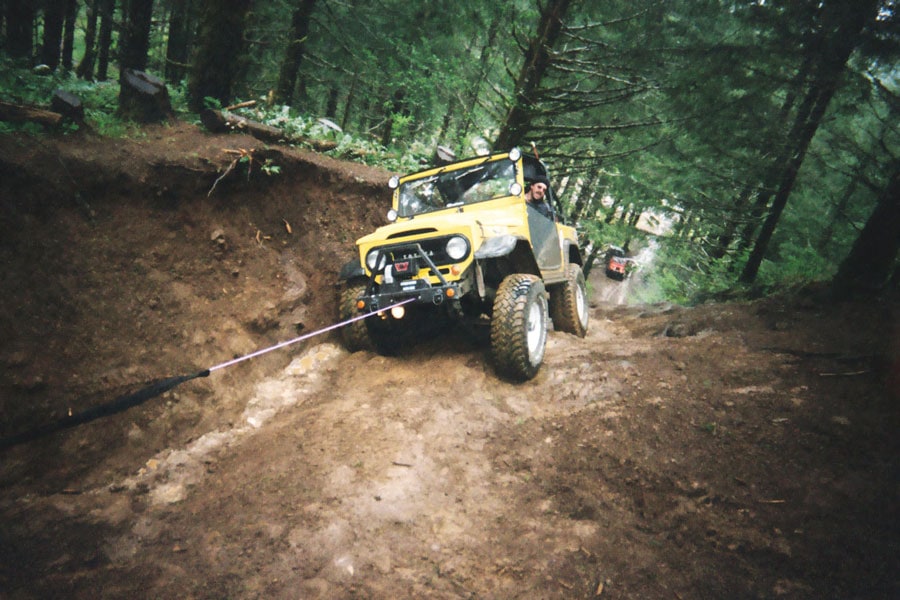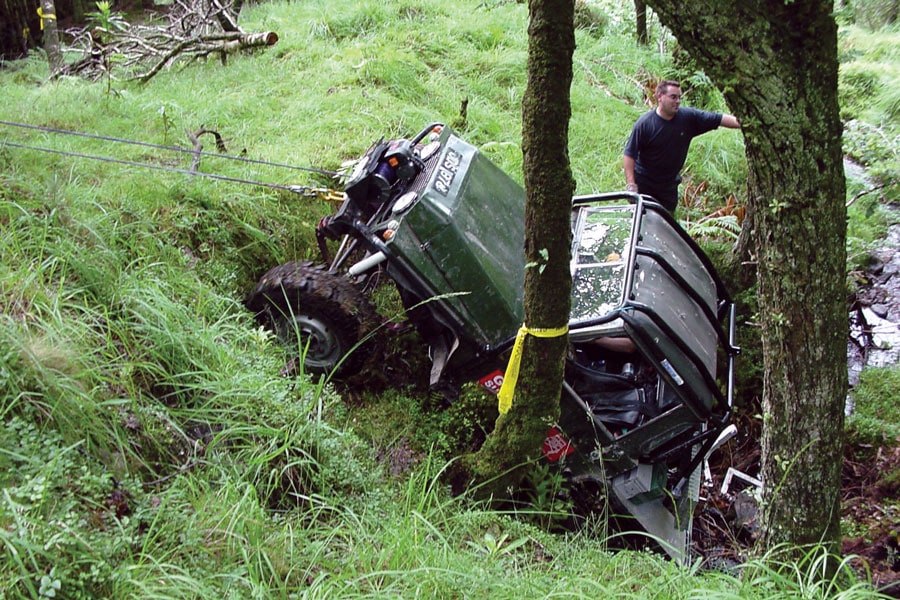The Challenge
For adventurous winch-event off-roaders, the hoists and the load-bearing lines that they carry are their most indispensable assets. Poorly equipped vehicles can quickly become immobilized in ditches or on steep slopes, culminating in burned-out drive shafts, busted CV joints and broken lines.
Historically, winch lines have been tensile steel wire cables; while effective, they have presented users with a range of problems, mainly due to their weight and design.
A safer, lighter option was needed with the ability to withstand heavy load strains.
The Solution
Cortland Company’s response to the industry’s growing need for a lighter, stronger winch line was Plasma® 12 strand, a braided high performance synthetic rope, manufactured from high modulus polyethylene (HMPE), which has the highest strength-to-weight ratio of any synthetic fiber.
Cortland’s Plasma® rope is 7-10 times lighter than a steel rope of equivalent size and strength, making it much easier to carry, especially in rough terrain. Plasma® is also a safer option due to its construction, with a low risk of recoil; and offers better internal abrasion resistance.
The Project
In 2005 Plasma® proved its worth at one of the most highly regarded winch challenges in the world, featuring some of the most extreme terrain in Britain. Drivers of the event in the Argyll Forest in Scotland had to contend with rocky outcrops, heavily wooded bogs and peat bogs so deep the only way through was with the aid of well-treaded tires and a winch.
To withstand the rigors of the terrain, all 44 drivers competing selected Plasma® 12-strand winch lines.
Aside from the weight of the steel cable winch, a typical 150ft steel cable can weigh 50lbs, which is cumbersome and awkward to deploy. Steel cables are also susceptible to break under tension, which can cause a whipping action that can strike or inflict injury to anyone in its path. With the wear and tear, steel cables also have a tendency to fray, kink and suffer compression damage.
Plasma® is not only equally strong to steel cables, yet lighter; it is also a safer option due to its construction. Unlike steel wire, which is wound, the strands of Plasma® fiber are braided; this means that when under strain, the Plasma® rope has only a fraction of energy build-up compared to steel cable. If breakage occurs, the Plasma® winch line simply drops to the ground instead of recoiling towards the vehicle or observers.
Plasma® rope also displays improved resistance to abrasion vs steel cables – the sort of wear and tear that causes steel cable to kink, splinter and fray, as well as becoming damaged from compression.
Since its introduction to winch events in 2000, the use of Plasma® rope has become a fixture, and the word Plasma® alone has become synonymous in the sport for highperformance synthetic rope.
For adventurous winch-event off-roaders, the hoists and the load-bearing lines that they carry are their most indispensable assets. Poorly equipped vehicles can quickly become immobilized in ditches or on steep slopes, culminating in burned-out drive shafts, busted CV joints and broken lines.
Historically, winch lines have been tensile steel wire cables; while effective, they have presented users with a range of problems, mainly due to their weight and design.
A safer, lighter option was needed with the ability to withstand heavy load strains.
The Solution
Cortland Company’s response to the industry’s growing need for a lighter, stronger winch line was Plasma® 12 strand, a braided high performance synthetic rope, manufactured from high modulus polyethylene (HMPE), which has the highest strength-to-weight ratio of any synthetic fiber.
Cortland’s Plasma® rope is 7-10 times lighter than a steel rope of equivalent size and strength, making it much easier to carry, especially in rough terrain. Plasma® is also a safer option due to its construction, with a low risk of recoil; and offers better internal abrasion resistance.
The Project
In 2005 Plasma® proved its worth at one of the most highly regarded winch challenges in the world, featuring some of the most extreme terrain in Britain. Drivers of the event in the Argyll Forest in Scotland had to contend with rocky outcrops, heavily wooded bogs and peat bogs so deep the only way through was with the aid of well-treaded tires and a winch.
To withstand the rigors of the terrain, all 44 drivers competing selected Plasma® 12-strand winch lines.
Aside from the weight of the steel cable winch, a typical 150ft steel cable can weigh 50lbs, which is cumbersome and awkward to deploy. Steel cables are also susceptible to break under tension, which can cause a whipping action that can strike or inflict injury to anyone in its path. With the wear and tear, steel cables also have a tendency to fray, kink and suffer compression damage.
Plasma® is not only equally strong to steel cables, yet lighter; it is also a safer option due to its construction. Unlike steel wire, which is wound, the strands of Plasma® fiber are braided; this means that when under strain, the Plasma® rope has only a fraction of energy build-up compared to steel cable. If breakage occurs, the Plasma® winch line simply drops to the ground instead of recoiling towards the vehicle or observers.
Plasma® rope also displays improved resistance to abrasion vs steel cables – the sort of wear and tear that causes steel cable to kink, splinter and fray, as well as becoming damaged from compression.
Since its introduction to winch events in 2000, the use of Plasma® rope has become a fixture, and the word Plasma® alone has become synonymous in the sport for highperformance synthetic rope.

